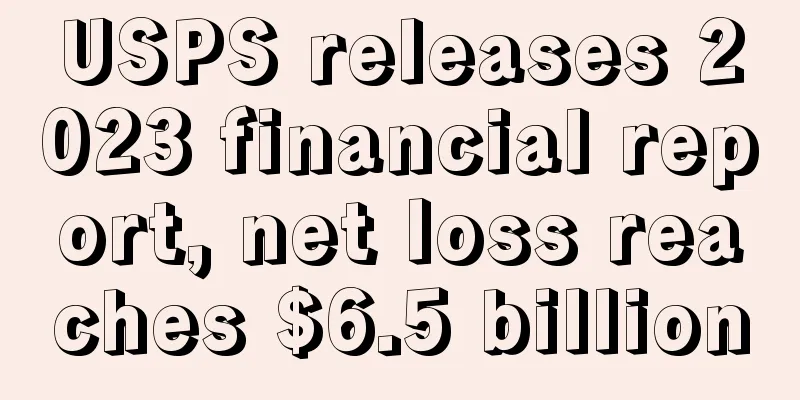Peak season orders cut by 50%! Sellers: Clearing inventory is considered a success

|
The autumn sale has just ended, Black Friday and Cyber Monday are just around the corner, and now is the Q4 peak season, but the shadow of sluggish orders still hangs over many cross-border sellers and will not go away for a long time.
Looking at the report of the autumn sale that ended some time ago, during the two-day event, Amazon Prime members around the world purchased more than 150 million items from third-party sellers, higher than about 100 million items in 2022.
Overall, the overall sales performance of Prime Day this fall is significantly stronger than last year. However, behind the impressive data, there are also many hidden concerns.
First, in order to maximize the share of traffic and grab orders, a large number of Amazon sellers have increased promotional discounts. According to a survey by Stratically, 45% of brands spent more on promotions than last year. As a result, although sales were significantly boosted during the promotion period, the thin profits caused by the fierce price war have made many sellers feel uncomfortable.
On the other hand, this year's peak season promotions are more dazzling than in previous years. In addition to Amazon, local giants such as Walmart and new cross-border platforms such as TikTok Shop are also targeting the Q4 holiday sales season. Therefore, consumers' shopping needs are not only being fought over by multiple parties, but also being overdrawn in advance.
This has further led to the situation that although it is the peak season, the orders of many sellers are still "miserable".
A senior seller in the industry revealed: "I feel that in October this year, except for the two days of the Autumn Member Day, the sales were terrible, down nearly 30% year-on-year."
Many sellers feel that they are all in the same boat:
"We also saw a drop of about 30% to 40%." "The current sales volume is really terrible. If I look at the payment alone, it is obviously less than last year." "Orders have halved, ads have doubled, and now I don't even want to open the backend." "I originally thought it was just my problem, as my advertising exposures have decreased significantly."
The current stage is not only an important node for preparations for Black Friday and Cyber Monday, but also a peak traffic period for Halloween promotions. Based on past experience, sales of related seasonal products tend to see a significant boost after mid-October. However, with Halloween approaching and Black Friday just around the corner, many sellers’ orders are still “isolated” in the off-season, and the decline is even more obvious compared to last year.
Some sellers said frankly that the old products and classic IPs are basically not popular at present, and the sales have plummeted by more than 50% compared with last year, and the new products they developed are even more bleak. Sales have risen sharply since October 1 last year, but sales have only improved a little since October 20 this year. "The peak season window is only before the 27th, and there is only a one-week hot selling period. It is really too difficult." The seller said helplessly.
From the perspective of the consumer market, the acceleration of inflation in the United States in September increased the possibility of another interest rate hike, and consumers' peak season budgets became tighter. Under the double pressure of high inflation and rising interest rates, American consumers continue to be cautious about spending, and they are more inclined to spend on cheap and practical daily necessities or high-cost-performance products during big promotions.
The sales situation during the autumn promotion also shows this: 60% of the products are priced below $20, while only 4% are priced above $100. This means that price is the decisive factor in grabbing consumers' wallets. This is an invisible challenge for sellers who already have low orders.
"Black Friday and Cyber Monday have been extended to 10 days this year in order to clear out the inventory." The peak season is not hot and the profits are too cold. Some sellers who are caught in a dilemma have already begun to look forward to 2024, and they will consider it a success if they can clear out the inventory during the big promotion.
As preparations for Black Friday are in full swing, Xiamen’s largest seller Jihong Co., Ltd. has released its financial report for the first three quarters of this year.
The financial report shows that in the first three quarters of this year, Jihong Co., Ltd. achieved a total revenue of 4.931 billion yuan, an increase of 25.25% over the same period last year, and achieved a net profit attributable to shareholders of listed companies of 321 million yuan, an increase of 61.41% over the same period last year.
Among them, the revenue in the third quarter was 1.786 billion yuan, a year-on-year increase of 35.82%, and the net profit attributable to shareholders of the listed company was 131 million yuan, a year-on-year increase of 57.41%.
Since 2023, there are still many uncertainties in the macroeconomic environment, and the environment along the cross-border export route is also constantly turbulent. A sharp decline in orders and increased revenue without increased profits have become the norm for many small and medium-sized sellers with weak risk resistance, and the top sellers are also unable to rest easy, as they are troubled by the growth rate of performance and the scale of profits.
Under the constraints of rising costs, intensified internal competition, and performance pressure, cost reduction and efficiency improvement have gradually become the main theme of operations. According to iResearch Consulting data, platform commissions, advertising and marketing, personnel management and other miscellaneous costs of cross-border e-commerce brands account for about 65% of core costs. How to control costs and spend money wisely is a core proposition of cross-border operations.
Under this situation, Jihong Co., Ltd. chose to follow the cross-border trend of AI and adhere to the digital-driven strategy of "data as the axis and technology-driven" to inject vitality into performance growth.
Since the layout of cross-border e-commerce business in 2017, Jihong Co., Ltd. has invested more than 150 million yuan in research and development expenses to continuously iterate and upgrade its independently developed cross-border social e-commerce operation and management system. It has now been upgraded to the third generation Giikin3.0, laying a solid intelligent system foundation for the long-term development of cross-border business and accumulating rich cross-border social e-commerce data and material assets.
As ChatGPT drives the AIGC craze, Jihong Co., Ltd. will further integrate AI and ChatGPT into cross-border e-commerce application scenarios. On this basis, it will launch tools such as the e-commerce text vertical model ChatGiiKin6B, the e-commerce intelligent design and material generation vertical model GiiAI, and the intelligent delivery assistant G-king.
Thanks to the digital operation strategy, Jihong Co., Ltd.'s risk resistance has been continuously improved, thereby achieving refined management, continuously improving operational efficiency and profitability, and further promoting performance improvement. It is not difficult to see that AI tools are gradually becoming a powerful tool for cross-border e-commerce to improve efficiency and promote growth. Especially at the critical node of the peak season, facing the market environment where there are more people than porridge, if you want to achieve long-term sustainable development of performance, you need to reasonably control costs and improve operational efficiency. |
<<: Amazon's major changes to advertising space are about to trigger a battle for traffic?
>>: Amazon changed its face overnight! There are major changes in its brand review policy!
Recommend
A roundup of Amazon’s hot events of the week!
Amazon launches new Audible Suno app in India Ama...
What is the American Audio-Technica Overseas Warehouse (Ship Angle)? American Audio-Technica Overseas Warehouse (Ship Angle) Review
Audio-Technica's Ship Angle warehouse in the U...
After losing hundreds of thousands of dollars in one year, Amazon's solo sellers have returned to being "social animals"
Some people say that after working at Amazon for a...
The pure white hat store has not made any profit for a year! White hat means are limited. The store has nearly 80 SKUs and runs about 170 ads every day. How to make a plan to get rid of the current sales stagnation?
Anonymous user My C position Thank you all for you...
How to find an off-site promotion website that suits you
text How to find such promotional websites through...
Before Amazon’s peak season, sellers’ nightmare comes again!
The 618 shopping festival in China has already kic...
Walmart launches "Add to Heart" shoppable ad to increase social e-commerce
Walmart has launched a shoppable ad called "A...
Amazon FBA new regulations, a large number of sellers received warnings! !
text Amazon has put forward new requirements for ...
What is Winlink Technology? Winlink Technology Review
A cross-border e-commerce software company headqua...
Amazon strikes hard! From October, the "repeat violation" policy will be upgraded, and the account may be warned and suspended!
Normal, once there is data abnormality, such as s...
What is Mango Store Manager? Mango Store Manager Review
Mango Store Manager is a free multi-platform and m...
How to create and set up A+ pages that can improve Amazon listing conversion rates?
Amazon A+ pages are different from ordinary produ...
What is UNCTAD? UNCTAD Review
The United Nations Conference on Trade and Develop...
Big news! Amazon limits total FBA inventory, all European and American sites affected
Today, many Amazon sellers were stunned when they ...
4 of the best CPC mind maps on Amazon (absolutely useful)
Here comes the useful information. Today I will sh...









